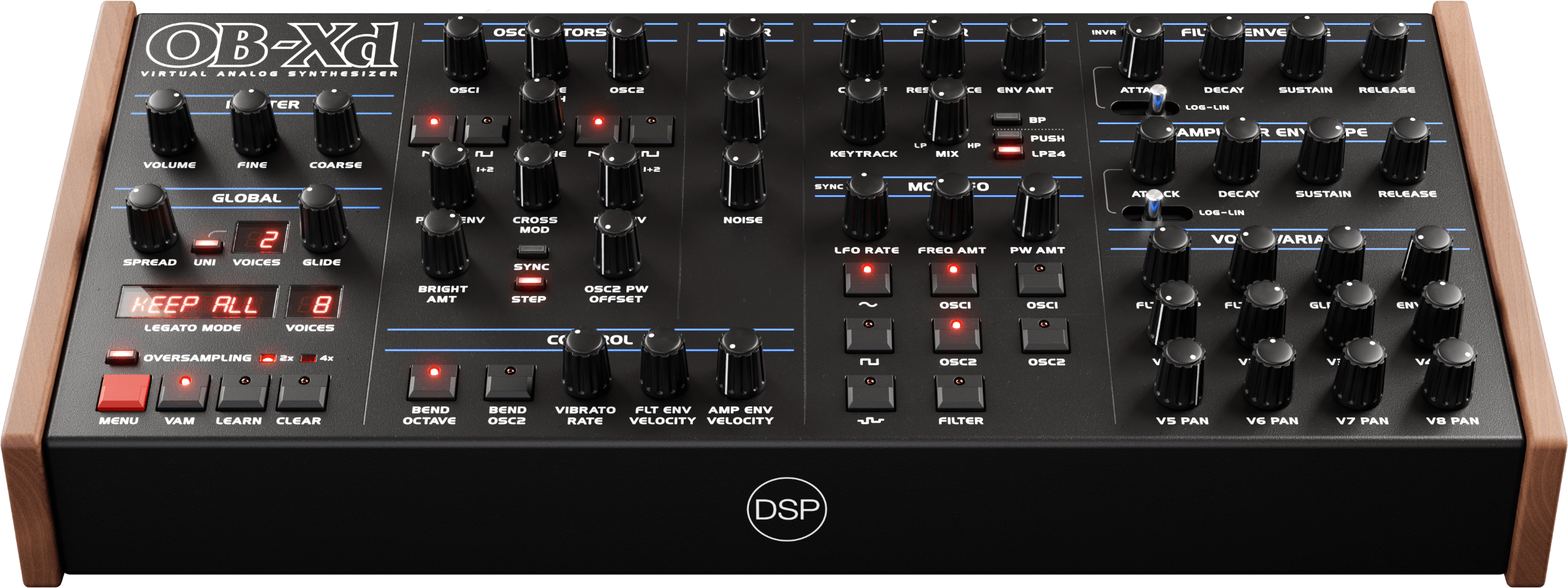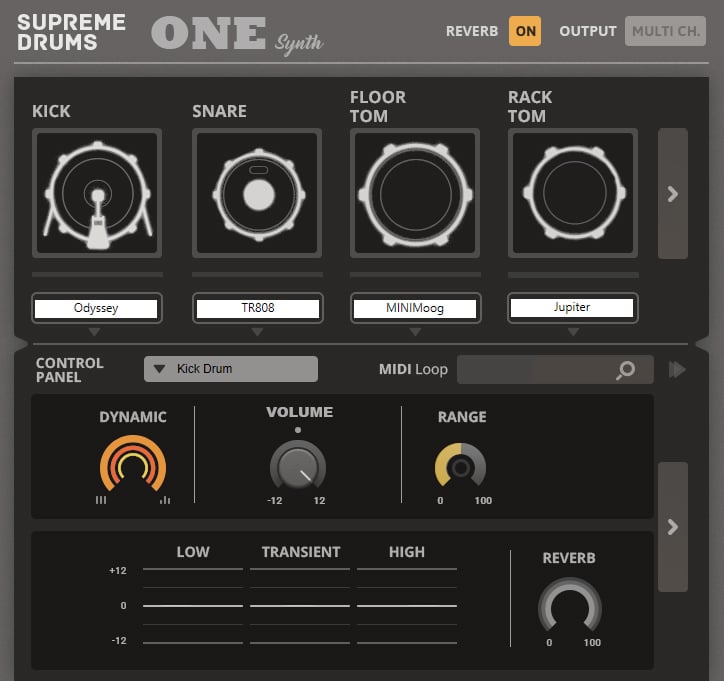OB-Xd 3.8
OB-Xd is a classic synthesizer that captivates musicians with its rich, full-bodied tones and expansive sound design. Perfect for adding a vintage touch to electronic tracks, live recordings, or film scores, OB-Xd brings unique and expressive qualities to your music. Designed to recreate the Oberheim OB-X, it features enhancements like micro random detuning and unison for a fuller sound. Elevate your studio setup and music production with OB-Xd today.
What's New in OB-Xd 3:
Unlock Bi-Directional MIDI Control: Now with MIDI Out for true bi-directional communication. Mirror your MIDI CC from XML templates or create custom setups with MIDI Learn. When MIDI Out is enabled, it sends CC output to channel 1 (for all channels) or the selected channel. Ideal for controllers like the TouchOSC template or SFC-OB, enhancing your control and creativity.
New Unison Voices: This feature allows you to add multiple voice layers to each note played, creating a fuller and richer sound.
You can choose from 1 to 16 voices, where each additional voice adds complexity and depth to the sound. For the best effect, use this with the spread control set at half or higher to clearly distinguish the layered voices. This parameter is ideal for enhancing pads, leads, and basslines, offering a thicker, more immersive sonic character.
Enhanced Oscillator Features: The update introduces new Pulse Width Modulation Controls for intricate sound shaping, enhancing the sonic possibilities of the oscillators.
PW Offset: Adjusts the pulse width of Oscillator 2 with a unipolar knob based on the PW knob's setting.
PW Env: Modulates Oscillator 2's pulse width with the Filter Envelope.
PW Env Both: 1+2 button allows the Filter Envelope modulation to affect both oscillators' pulse width.
Advanced Filter Capabilities: Including Self-Oscillation, Filter Falloff Adjustment, and Adjustable Filter Envelope Shape, providing more control and variety in sound filtering.
Self-Oscillation: The 12dB filter now self-oscillates at high resonance levels.
Filter Falloff Adjustment: A new FLT CMP knob in the Voices section influences cutoff scaling.
Adjustable Filter Envelope Shape: Blends between exponential and linear shapes for the attack.
Filter Envelope Inversion: A new button for inverting the Filter Envelope output.
Enhanced Filter Keytracking Control: A refined knob offers precise control over the filter's response to keyboard tracking.
Level Difference Knob: Ensures consistent audio output during filter adjustments.
Refined Attack Envelope Shape: This feature introduces a sophisticated logarithmic-linear attack slider, offering unparalleled flexibility for dynamic sound sculpting. The slider enables users to precisely control the attack phase of sounds, ranging from subtle, gentle slopes for softer onsets to sharp, aggressive inclines for more pronounced attacks.
This dual-mode approach allows for a wider array of sonic textures, providing musicians and producers with the tools to tailor the attack characteristics of their sounds, whether they're aiming for a natural, smooth progression or seeking a more abrupt, impactful onset.
Oversampling Selection: Available in the registered version, this feature offers options for different sound quality requirements, including no oversampling (1x), 2x, or 4x.
MIDI and Preset Bar Enhancements: Improved usability and functionality, making it easier to manage and access MIDI controls and presets.
LFO Synchronization: Ensures perfect timing by syncing the internal LFO with your DAW's BPM.
Supported Formats:
- Universal Binary 2: Native Intel and Apple Silicon.
- Standalone Application: No additional software required.
- ProTools AAX. Apple Audio Unit. Steinberg VST. Steinberg VST3. LV2.






